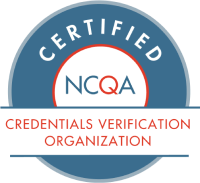Lessons From The New Healthcare Economy
As trendy a term as “the new healthcare economy” has become, it’s one that carries significant weight. Though innovation in healthcare has been consistently on the rise for years, the last few in particular have seen a dramatic uptick in companies looking to disrupt the space.
In the first half of 2018 alone, over $3.4 billion was invested in digital healthcare startups.
This trend has held steady as new healthcare companies attempt to tackle headaches that have been plaguing the healthcare system for decades.
These new healthcare companies are doing things a little differently, providing an opportunity to examine lessons and cautionary tales from the boom in healthcare innovation. Here’s a deeper dive into four essential lessons—and cautions—from the new healthcare economy.
Lesson 1: Invest In Technology
In the past, companies often thought of themselves first and foremost as healthcare companies, but with the wave of disruption occurring in the space, that mind-set is quickly changing. In turn, healthcare- focused companies are changing too, and leveraging technology to better serve their members.
Here’s why: Investing in comprehensive technology allows healthcare companies to stay nimble and innovative and solve long-standing administrative problems, such as keeping provider directories up-to-date. In turn, this investment in new platforms and capabilities allows companies to further focus on the members on the other side of their services.
Clover Health is an example of a health-tech company that is using data technology to empower its customers to better manage their own health.
“To date, insurance technology has been approached as an afterthought, or a Frankenstein of bolt-on functionality,” says Alicia Beckett, product manager at Clover Health. “We are able to combine data from many sources—lab data, EMR data, claims data, nurse practitioner data—to develop a robust view of a member’s health and life. Creating insights from the data is extremely challenging, but our technology is great at working through data management problems and complex data. I believe that is what technology is meant to do, and since we have some of the best tech talent in the world, we’re able to build systems that translate the data we’ve collected to real-world action. We’re building our technology from the ground up because the quality of insights we glean from data would be impossible for companies with fragmented technology and outdated systems.”
As the healthcare system continues to overflow with data, Clover is an excellent example of successfully leveraging this data to empower and inform real-life decisions for patients.
Caution
Amazing technology does not replace industry expertise. Legacy companies have a deep knowledge of working with the American healthcare system, which can be harnessed to inform how cutting-edge technology is managed.
Lesson 2: Bring The Humanity Back To Healthcare
New technology in the healthcare industry—and specifically, in the insurance space—has fueled a renewed focus on members, and many companies are now viewing their vast pool of members as an opportunity to help patients navigate an increasingly complex system.
With a crowded marketplace, healthcare companies need an X-factor to set them apart from the others. Oscar, for example, is meeting members where they are, making going to the doctor easier and more convenient. From transparent pricing to plan options that cut through the jargon and make choices easier, Oscar is banking on the love of convenience and digestible information to attract customers.
It’s no surprise that Oscar found itself on the list for “Most Innovative Company” this year. With customer service at the core of its mission, Oscar is garnering attention not only from new customers but from backers like Google’s parent company, Alphabet, to expand their services into the Medicare Advantage space.
Caution
To improve customer service relationships, you must know your customer base and their needs. While millennials may love to shop for plans and search for doctors online, not all generations do. According to a 2015 study conducted by the Pew Research Center, only 26% of internet users over the age of 65 say they “feel very confident when using electronic devices to do the things they need to do online.”
Lesson 3: Doctors Are People Too
The pain points of healthcare administration are not only felt by patients but by practitioners as well. In a 2017 study, Medscape asked providers to rate the causes of burnout, and the number one complaint was “too many bureaucratic tasks.”
The negative spiral of provider burnout not only affects providers and their patients; it affects the entire healthcare ecosystem, including hospitals and insurance companies. In the new healthcare economy, administrative work is no longer done entirely on paper. Some professional stressors, like working daily with sick patients, cannot be changed, but administrative work is a problem ripe to be solved with technology-based solutions.
New healthcare companies are looking to make doctors’ lives easier too. From automating the credentialing process to using smartphone apps to connect doctors around the world, healthcare tech is improving the lives of doctors in many exciting new ways.
A growing number of companies are now offering virtual care, giving providers a more flexible option for setting their schedules. Doctor on Demand is one such service that is attracting physicians by promoting physician satisfaction with this new ability to work a flexible schedule from home. These virtual visits create an environment where “quality of service, and meaningful patient-physician relationships”4 are accomplished more quickly and in a way that provides tangible benefits to both patient and provider.
Many legacy healthcare companies are actively taking advantage of the option to provide virtual visits. In the large group insurance sector, more and more companies are offering the benefit of telemedicine. The inclusion of telemedicine “has steadily increased each year from 27 percent in 2015 to 74 percent in 2018.”
Caution
While a flexible schedule enabled by virtual visit technology might solve some problems for some providers on the brink of provider burnout, the real work still remains to be resolved behind the scenes by cutting down the amount of administrative work a provider has to complete to get credentialed, submit claims, and get paid.
Lesson 4: Increase Access To Care
The increase of virtual visits doesn’t only help doctors take control over their schedules; it is actually increasing access to care. The new healthcare economy is looking to locate existing barriers and to overcome them using technology.
For a long time, one of the most formidable barriers facing healthcare is the stigma that surrounds mental health. Even though a reported 43.8 million Americans experience mental illness, in 2018 60% did not receive any services or treatment—yet more and more evidence shows that behavioral healthcare must be integrated with treatment of chronic illness to help secure positive health outcomes.
The overwhelming need for increased access to mental healthcare has led to the emergence and rising popularity of tech-enabled healthcare companies, such as TalkSpace and Teladoc. Using online platforms to chat, text, and video call with therapists and psychiatrists, these companies opened the doors to many new patients accessing mental health services for the first time. TalkSpace has already provided services for 1 million patients, further proving that there is a high demand for more accessible mental health care.
Caution
Ad hoc services that promise convenience should not replace but should instead complement continuous care. While it may be more convenient to see a doctor virtually, it is critical to also have a rapport and a patient history with a primary care physician or practice group.
Conclusion
So What’s The Final Takeaway?
It’s an exciting time to be in the healthcare industry, no matter which team you play for. In an increasingly crowded and diverse healthcare market, the norms of conducting business are quickly changing.
Convenient, easy-to-use tools are now expected by healthcare consumers. Legacy companies, with their incredible breadth of reach, can turn the tide of the healthcare market as they adapt to and adopt assets from the new entrants to the market.
The marriage of traditional and new is already happening. In 2017, for example, Anthem implemented a new comprehensive digital health platform for members nationwide by partnering with Castlight, a tech-based company that offers flexible healthcare navigation platforms to its customers.
As the new healthcare economy continues to grow and disrupt, this integration of old and new will be critical to the continuous improvement of the entire ecosystem. Without the deep knowledge of legacy healthcare companies, startups entering the space will not have a solid foundation on which to base their enterprises. Conversely, without the progressive, innovative energy of new entrants, legacy organizations may not always be able to offer their members what they want.
Just like many great combinations in life—peanut butter and jelly, or the beach and a good book—the healthcare industry is a prime example of how two drastically different forces can ultimately work better together.
andros is a new kind of CVO
Built on sophisticated technology and a partnership mindset, we help your team improve your credentialing function to spend less time and manual effort on repetitive data entry tasks.
andros’s technology automates the monotonous verification work required for compliant credentialing and simplifies everything else: the application, committee review prep, approval, ongoing monitoring, recredentialing and reporting. This is how we transform the credentialing function into a fast, compliant and cost-effective process for healthcare organizations that are dissatisfied with inefficiencies that lead to burned-out employees, frustrated providers and missed business opportunities.


